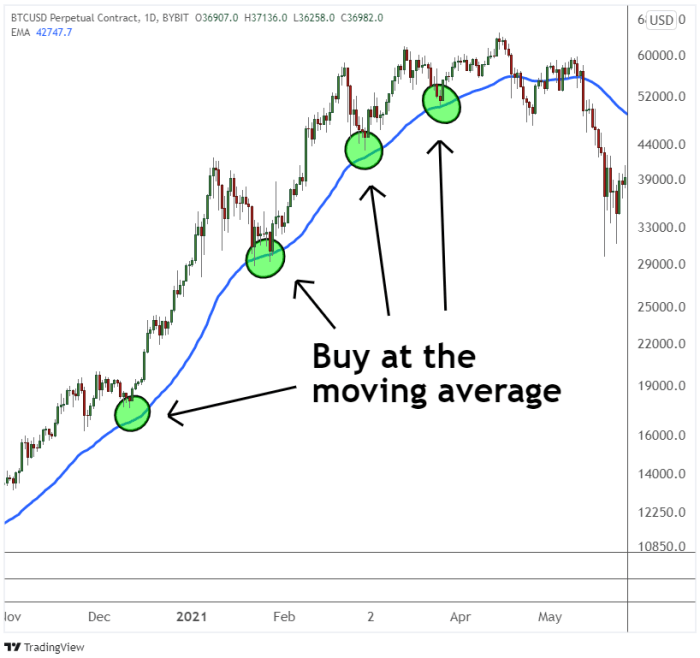
How to invest during a market correction is not just a timely question, it’s a crucial one for investors looking to navigate the turbulent waters of the financial market. Market corrections, often seen as opportunities hidden within periods of volatility, can lead to significant investment gains if approached with the right strategy.
Understanding the nature of market corrections, their historical context, and the sectors that thrive in these challenging times is essential. By employing strategic investment methods and utilizing resources tailored to such scenarios, investors can better position themselves to weather downturns while capitalizing on potential growth.
Understanding Market Corrections
Market corrections are a natural part of the investment landscape, characterized by a temporary decline in stock prices, typically defined as a drop of 10% or more from recent highs. These fluctuations, often fueled by changes in market sentiment, economic indicators, or global events, can create both challenges and opportunities for investors. Understanding the nature of these corrections helps investors make informed decisions and withstand the psychological pressures that come with market volatility.The duration of market corrections can vary significantly, but they generally last from a few weeks to several months.
Historically, corrections have occurred about once a year, according to data from financial analysts. For instance, the average correction in the S&P 500 has lasted around 54 days. While these dips can feel daunting, historical data reveals that markets typically recover and reach new highs, making it essential for investors to remain focused on long-term goals rather than short-term fluctuations.
Historical Data on Market Corrections
Examining historical data provides valuable insights into the behavior of markets during corrections. Research shows that, on average, the S&P 500 has experienced corrections of 10% or more nearly every year. While the initial decline can lead to panic selling, history indicates that markets eventually rebound. For example, during the 2008 financial crisis, the S&P 500 dropped over 50% from its peak but fully recovered within five years.
In contrast, the market saw a correction of around 19% in early 2016, which was followed by a swift recovery, showcasing the resilience of long-term investments.
Sectors That Perform Better During Corrections
Certain sectors tend to show relative strength during market corrections, often providing a buffer against broader market declines. Understanding which sectors to focus on can help investors navigate these turbulent times more effectively. Typically, defensive sectors such as utilities, consumer staples, and healthcare exhibit more resilience during corrections. These sectors are characterized by steady demand for their products and services, regardless of economic conditions.
For instance, during the correction in early 2020 triggered by the COVID-19 pandemic, companies in the healthcare sector, like Johnson & Johnson and Pfizer, not only maintained performance but also saw increases in demand for their products. Similarly, the consumer staples sector, including companies like Procter & Gamble and Coca-Cola, tends to remain stable due to consistent consumer demand.In summary, understanding market corrections, their historical context, and the sectors that typically outperform can empower investors to make strategic decisions during turbulent times, ultimately enhancing their investment resilience.
Investment Strategies During Corrections
Market corrections can evoke uncertainty and anxiety among investors, but they also present opportunities for strategic investment. Understanding how to navigate these downturns with effective strategies can help mitigate risks and position your portfolio for future gains. By diversifying investments, considering defensive stocks, and rebalancing portfolios, investors can protect their capital and even thrive during such times.
Diversifying a Portfolio to Mitigate Risks
Diversification is essential during market corrections, as it helps spread risk across various asset classes, sectors, and geographical areas. By not putting all your eggs in one basket, you can reduce the impact of poor performance in any single investment. Here are some methods for effective diversification:
- Invest in different asset classes: Consider a mixture of stocks, bonds, real estate, and commodities. Each asset class has unique characteristics and reacts differently to market conditions.
- Sector diversification: Allocate funds across various sectors such as technology, healthcare, and consumer goods. Some sectors tend to be more resilient during downturns.
- Geographical diversification: Invest in domestic and international markets. Global exposure can buffer against localized economic downturns.
- Use index funds and ETFs: These investment vehicles provide exposure to a wide range of securities, making diversification easier and more cost-effective.
Defensive Stocks and Sectors to Consider
During a market correction, defensive stocks typically exhibit more stability compared to their counterparts in growth sectors. These stocks belong to industries that maintain steady demand regardless of economic conditions. Here’s a list of defensive stocks and sectors to consider:
- Utilities: Companies in this sector, such as Southern Company and Duke Energy, provide essential services and tend to have stable earnings.
- Consumer Staples: Firms like Procter & Gamble and Coca-Cola produce everyday products that are always in demand, making them resilient during downturns.
- Healthcare: Companies such as Johnson & Johnson and Pfizer provide essential health services and products, which remain necessary regardless of economic fluctuations.
- Telecommunications: Firms like Verizon and AT&T offer vital communication services that maintain consistent demand even in tough times.
Step-by-Step Approach for Rebalancing an Investment Portfolio
Rebalancing your investment portfolio during market corrections is a proactive strategy that helps maintain your desired level of risk exposure. Here’s a systematic approach to rebalancing:
- Assess Current Portfolio Allocation: Review your portfolio to determine how much of your capital is allocated to different asset classes and sectors.
- Identify Deviations: Compare your current allocations with your target allocations to identify any significant deviations caused by market movements.
- Decide on Action: Based on your analysis, determine whether to sell overperforming assets or buy underperforming ones to realign with your target allocation.
- Implement Changes: Execute trades to adjust your portfolio. This might include buying more of defensive stocks or diversified ETFs.
- Monitor and Review Regularly: Set a schedule to review your portfolio periodically. Adjustments should be made based on changes in market conditions or your financial goals.
Effective rebalancing can enhance returns and reduce risk by ensuring your portfolio aligns with your overall investment strategy.
Tools and Resources for Investors

Investing during a market correction requires the right tools and resources to navigate volatility effectively. As market conditions fluctuate, having access to robust platforms and information can significantly impact decision-making and strategy implementation. This section will explore various tools, platforms, and investment options that can support investors during downturns.
Platforms for Day Trading
Day trading during market corrections can be both challenging and rewarding. The right trading platforms can provide real-time data, advanced charting tools, and quick order execution. Here are some popular platforms that cater to day traders, especially in volatile markets:
- TD Ameritrade’s thinkorswim: This platform offers advanced charting tools, technical analysis indicators, and a user-friendly interface, making it suitable for both novice and experienced traders.
- Interactive Brokers: Known for low commissions and a comprehensive suite of tools, Interactive Brokers provides access to a wide range of markets and asset classes, which is crucial during corrections.
- Charles Schwab: With a robust mobile app and stock research tools, Charles Schwab allows investors to manage trades on the go, making it easier to react quickly to market changes.
- Robinhood: Offering commission-free trading, Robinhood appeals to younger investors who prefer a simplified trading experience and real-time market data.
Investing in Futures and Commodities
Investing in futures and commodities can be an effective strategy during market downturns, but it comes with its own set of benefits and risks. Futures contracts allow investors to speculate on the future price of an asset, potentially providing significant returns in a declining market. However, this also involves higher risk due to leverage and market volatility.
“Futures trading can amplify gains but also lead to substantial losses if the market moves against your position.”
Understanding the benefits and risks is essential:
- Benefits: Futures contracts can hedge against inflation and provide diversification. They also allow traders to take advantage of price fluctuations in various sectors like energy, agriculture, and metals.
- Risks: The leverage used in futures trading can magnify losses, and market unpredictability can lead to significant financial exposure. It’s crucial for investors to have a solid risk management strategy in place.
Mutual Funds Focused on Stability
Mutual funds that emphasize stability and performance during volatile markets can be a reliable investment choice. These funds often invest in blue-chip stocks, bonds, or defensive sectors that tend to perform well in downturns. Choosing the right fund requires understanding its investment strategy and historical performance.When evaluating mutual funds, consider the following aspects:
- Expense Ratios: Lower expense ratios can enhance long-term returns, particularly during market corrections when returns may be more modest.
- Manager Experience: A seasoned fund manager with a proven track record of navigating downturns can provide an added layer of confidence.
- Performance History: Analyzing how a fund has performed during past market corrections can offer insights into its resilience and stability.
Investors should consider funds such as the Vanguard Wellington Fund or Fidelity Balanced Fund, which historically have shown to provide more stability in turbulent markets.
Closing Notes

In conclusion, successfully investing during a market correction involves a blend of knowledge, strategy, and the right tools. By being informed about market trends, diversifying your portfolio, and focusing on stability, you can not only safeguard your investments but also seize the advantages that come with market fluctuations. Preparation and patience are key to thriving in the face of adversity.
Answers to Common Questions
What is a market correction?
A market correction is typically defined as a decline of 10% or more in the price of a security or index from its recent peak.
How long do market corrections usually last?
Market corrections can last anywhere from a few weeks to several months, but historically, they tend to be shorter than bear markets.
Should I sell my investments during a correction?
It’s generally advised not to panic sell during corrections; instead, assess your investment strategy and consider buying opportunities.
What are defensive stocks?
Defensive stocks are shares in companies that tend to perform well during economic downturns, such as utilities and consumer staples.
Can mutual funds help during market corrections?
Yes, mutual funds that focus on stability and performance can provide a diversified approach that helps mitigate risks during corrections.






